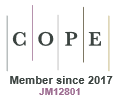Bacteriophages as biocontrol agents of bacterial contaminants of bivalves and their microalgal feeds
Tuan Son Le A B and İpek Kurtböke A *A
B

Tuan Son Le is currently employed at Tréidlia Biovet, Sydney, and at the Research Institute for Marine Fisheries (Vietnam). He obtained his Bachelor of Environmental Science degree in 2009 from the Vietnam National University in Hanoi, and Master of Fisheries Sciences degree in 2012 at the Pukyong National University in the Republic of Korea. He received a PhD in microbiology in 2019 from the University of the Sunshine Coast, Qld, where he investigated the use of bacteriophages to control bacterial diseases in aquaculture. |

Assoc. Prof. İpek Kurtböke has been working in the field of biodiscovery and has been an active member of the international actinomycete research community since 1982. She currently conducts research and teaches in the field of applied microbiology and biotechnology at the University of the Sunshine Coast, Qld. She has also been an active member of the World Federation of Culture Collections (WFCC) and currently is the President of the Federation. She was also the Editorial Board member of Microbiology Australia for 21 years (2004–24). |
Abstract
A FAO 2024 report1 noted that aquaculture production worldwide has excelled, and aquaculture produced surpassed captured fish resulting in an increase of 4.4% in 2022 compared to 2020. Production comprised 185.4 × 106 tonnes of aquatic animals and 37.8 × 106 tonnes of algae, which is also used as feed in the industry. These figures indicate that aquaculture production will continue to expand and will be one of the fastest growing sectors for food-production into coming decades. Bivalve molluscs will likely remain a major component of this production. However, the microbial infestation of bivalves and their microalgal feeds and subsequent disease occurrences are of significant concern. This article highlights the use of bacteriophages to eliminate pathogenic bacterial species in environments where bivalves are cultivated so they can be protected from bacterial diseases.
Keywords: antibiotic resistance, aquaculture diseases, bacteriophage, biocontrol, bivalves, sustainable aquaculture, Vibrio infections of molluscs.
 Tuan Son Le is currently employed at Tréidlia Biovet, Sydney, and at the Research Institute for Marine Fisheries (Vietnam). He obtained his Bachelor of Environmental Science degree in 2009 from the Vietnam National University in Hanoi, and Master of Fisheries Sciences degree in 2012 at the Pukyong National University in the Republic of Korea. He received a PhD in microbiology in 2019 from the University of the Sunshine Coast, Qld, where he investigated the use of bacteriophages to control bacterial diseases in aquaculture. |
 Assoc. Prof. İpek Kurtböke has been working in the field of biodiscovery and has been an active member of the international actinomycete research community since 1982. She currently conducts research and teaches in the field of applied microbiology and biotechnology at the University of the Sunshine Coast, Qld. She has also been an active member of the World Federation of Culture Collections (WFCC) and currently is the President of the Federation. She was also the Editorial Board member of Microbiology Australia for 21 years (2004–24). |
References
1 Food and Agriculture Organization of the United Nations (2024) In Brief to The State of World Fisheries and Aquaculture 2024. Blue transformation in action. FAO, Rome, Italy. 10.4060/cd0690en
2 Food and Agriculture Organization of the United Nations (2022) FAO report: global fisheries and aquaculture production reaches a new record high. https://www.fao.org/newsroom/detail/fao-report-global-fisheries-and-aquaculture-production-reaches-a-new-record-high/en
3 Wijsman J et al. (2019) Global production of marine bivalves. Trends and challenges. In Goods and Services of Marine Bivalves (Smaal A et al., eds). pp. 7–26. Springer International Publishing, Cham, Switzerland. 10.1007/978-3-319-96776-9_2
4 Duthie I (2012) Shellfish production aquaculture technology: global perspective of bivalve hatchery processes. A Report for Nuffield Australia farming scholars. Nuffield Australia Project Number 1017. Nuffield Australia, Moama, NSW, Australia. https://www.nuffieldscholar.org/sites/default/files/reports/2010_AU_Ian-Duthie_Shellfish-Production-Aquaculture-Technology-Global-Perspective-Of-Bivalve-Hatchery-Processes.pdf
5 The Nature Conservancy (2024) A case study for regenerative and restorative aquaculture: co-culturing seaweed with bivalve molluscs. https://www.aquaculturescience.org/content/dam/tnc/nature/en/documents/CoCulture_TNC_web1.pdf
8 Urtubia R et al. (2023) First report, characterization and pathogenicity of Vibrio chagasii isolated from diseased reared larvae of Chilean scallop, Argopecten purpuratus (Lamarck, 1819). Pathogens 12, 183.
| Crossref | Google Scholar | PubMed |
9 Cowan M et al. (2023) Role of the Vibrio community, reproductive effort, and environmental parameters in intertidal Pacific oyster summer mortality in British Columbia, Canada. Aquaculture 565, 739094.
| Crossref | Google Scholar |
10 Bean TP et al. (2024) Scottish oyster mortality event and association with Vibrio aestuarianus. Aquac Rep 39, 102480.
| Crossref | Google Scholar |
11 Gay M et al. (2004) Two Vibrio splendidus related strains collaborate to kill Crassostrea gigas: taxonomy and host alterations. Dis Aquat Organ 62, 65-74.
| Crossref | Google Scholar | PubMed |
12 Wang H et al. (2021) Screening of bacterial pathogens associated with mass summer mortality of the Pacific oyster, Crassostrea gigas, in China. Aquac Rep 20, 100672.
| Crossref | Google Scholar |
13 Bruto M et al. (2017) Vibrio crassostreae, a benign oyster colonizer turned into a pathogen after plasmid acquisition. ISME J 11, 1043-1052.
| Crossref | Google Scholar | PubMed |
14 Lupo C et al. (2019) Modeling the transmission of Vibrio aestuarianus in Pacific oysters using experimental infection data. Front Vet Sci 6, 142.
| Crossref | Google Scholar | PubMed |
15 Travers M-A et al. (2015) Bacterial diseases in marine bivalves. J Invertebr Pathol 131, 11-31.
| Crossref | Google Scholar | PubMed |
16 Lewis T et al. (2002) Pathogenic Vibrio parahaemolyticus in Australian oysters. FRDC Project 2002-409. Fisheries Research and Development Corporation. https://www.frdc.com.au/project/2002-409
17 Kang C-H et al. (2016) Antimicrobial susceptibility of Vibrio alginolyticus isolated from oyster in Korea. Environ Sci Pollut Res Int 23, 21106-21112.
| Crossref | Google Scholar | PubMed |
18 Albini E et al. (2022) A systematic review and meta-analysis on antimicrobial resistance in marine bivalves. Front Microbiol 13, 1040568.
| Crossref | Google Scholar | PubMed |
19 Helm MM et al. (2004) Hatchery culture of bivalves: a practical manual. FAO Fisheries Technical Paper 471. Food and Agriculture Organization of the United Nations, Rome, Italy. https://openknowledge.fao.org/handle/20.500.14283/y5720e
20 Lewis T et al. (1988) The use of 0.2-μm membrane-filtered seawater for improved control of bacterial levels in microalgal cultures fed to larval Pacific oysters (Crassostrea gigas). Aquaculture 69, 241-251.
| Crossref | Google Scholar |
21 Stalin N, Srinivasan P (2017) Efficacy of potential phage cocktails against Vibrio harveyi and closely related Vibrio species isolated from shrimp aquaculture environment in the south east coast of India. Vet Microbiol 207, 83-96.
| Crossref | Google Scholar | PubMed |
22 Wang Y et al. (2017) Bacteriophage therapy for the control of Vibrio harveyi in greenlip abalone (Haliotis laevigata). Aquaculture 473, 251-258.
| Crossref | Google Scholar |
23 Kalatzis PG et al. (2016) Isolation and characterization of two lytic bacteriophages, φSt2 and φGrn1; phage therapy application for biological control of Vibrio alginolyticus in aquaculture live feeds. PLoS ONE 11, e0151101.
| Crossref | Google Scholar | PubMed |
24 Rong R et al. (2014) Reductions of Vibrio parahaemolyticus in oysters after bacteriophage application during depuration. Aquaculture 418, 171-176.
| Crossref | Google Scholar |
25 Le TS et al. (2020) Use of bacteriophages to control Vibrio contamination of microalgae used as a food source for oyster larvae during hatchery culture. Curr Microbiol 77, 1811-1820.
| Crossref | Google Scholar | PubMed |
27 Le TS et al. (2020) Application of bacteriophages to control Vibrio alginolyticus contamination in oyster (Saccostrea glomerata) larvae. Antibiotics 9, 415.
| Crossref | Google Scholar | PubMed |
28 Le TS, Kurtböke Dİ (2019) Bacteriophages as biocontrol agents in aquaculture. Microbiol Aust 40, 37-41.
| Crossref | Google Scholar |


